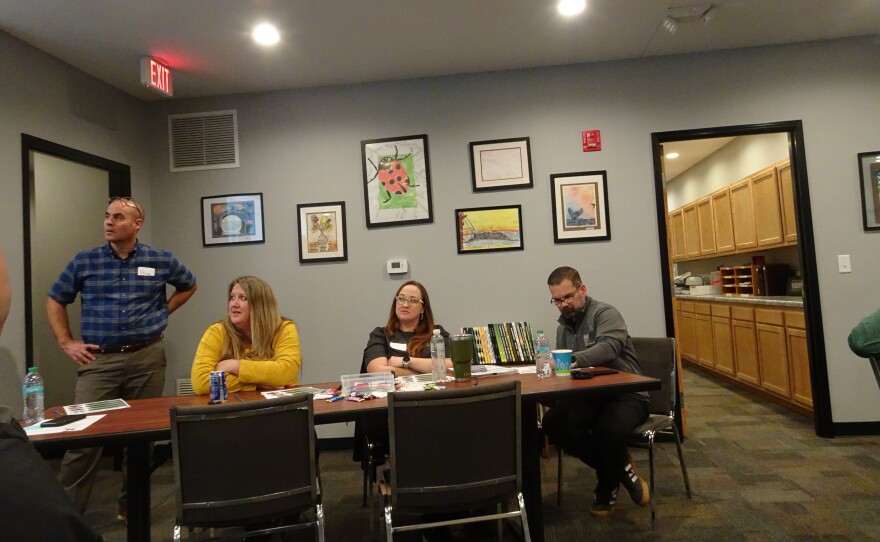Developing a strategic plan, to be updated every five years, is one of the core requirements of public schools as part of Missouri’s School Improvement Program, which was implemented in 1991 and is now in its sixth iteration. District's refer to these plans as Comprehensive School Improvement Plans (CSIP), and multiple school systems across the region are updating their plans this fall, including the Maryville R-II School District.
Maryville's process began in September with a meeting of 25 attendees ranging from district staff to city officials, to parents and community members.
The group is meeting four times this fall for three-hour-sessions, each directed by Matt Teeter and Shane Dublin, education consultants from southern Missouri.
The driving goal of the CSIP is to guide the district towards higher scores on state standardized testing, which are an integral part of a school district’s accreditation. But, explained Teeter at a Nov. 12 planning session, “a huge part of the process is first having a mission, having a vision.”
At its September and October meetings, the planning group considered the “Portrait of a Spoofhound,” brainstorming the essential qualities every graduate of the Maryville school system should demonstrate, qualities such as “integrity,” “grit,” “critical thinking,” and “compassion.” These helped develop a mission statement for the district, focused on cultivating students who can "contribute to their communities by advancing learning, leadership, character, and collaboration."
For the remainder of the process, Teeter said the group will move towards “developing focus areas and ultimately developing SMART goals which will propel the district to another level in terms of achievement." SMART, a popular goal-making technique, is an acronym for Specific, Measurable, Achievable, Relevant, and Time-based.
At the November meeting, which took place in the district's central offices after participants shared a dinner, the volume often escalated as people excitedly shared ideas and proposed line edits to the language being placed in the plan. Coffee was flowing and Hershey's Kisses littered the tables.
Teeter recognized a high level of passion in the room. He has worked with districts across the state and said what stands out in Maryville is the “pride and the drive for achievement.”
“On the first night we counted the number of years of Maryville represented in the room, either teaching, or living, or they married a spouse [who was from here], and it was incredible. We had something like over 500 years of Maryville.”
“This is essentially a destination district,” he said.

Jill Baker, a district parent and a professor of education at Northwest Missouri State University said the success of the city’s schools and its community-at-large are interdependent.
“Schools are what draw economic development. They are what recruit people to work in our hospitals, our factories, our faculty to Northwest. Everybody in Maryville should have a vested interest in making sure our schools are supported,” she said.
As it looks ahead, Maryville is well positioned financially, with a reserve ratio over 40% (the state encourages districts to keep a reserve of at least 20%), and has a robust student body even while many rural districts face enrollment declines. But challenges remain.
School teachers spoke candidly of the increasing need for counseling services and social-emotional support systems amongst the student body. They recognized a gap in childcare access for Maryville’s young families and wondered how the district could provide support and early schooling.
Some students, they recognized, get "lost," due to factors from outside the classroom whether that be challenges at home or in today’s culture-at-large.
At the state level, a task force is currently redrawing the state’s school funding formula, which adds to uncertainty to future funding, and a pending decline in state revenues has many public-school administrators planning for smaller budgets.
“Who knows what the next five years from now will look like,” Teeter said, before adding that's why planning matters.
“Maryville doesn’t have to depend on anything if it has this strategic plan in place." The document is something the district "can work from, and ultimately revise depending on potential factors.”
After a final session in December, the district’s school board will consider and adopt the plan that will take Maryville through 2030.






